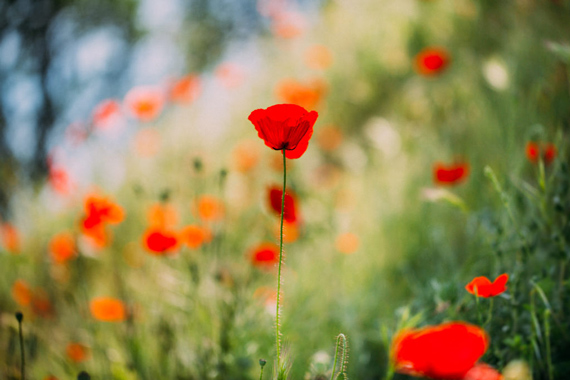People who invest in a digital single lens reflex (DSLR) camera make their purchase for many reasons, but most want more control over their shots. People may envision themselves selecting the appropriate lens, taking light measurements, setting the controls, and snapping the perfect photograph on the first try. Unfortunately, most people want to have more control over their camera rarely venture beyond the automatic or program modes, essentially using their DSLR as a heavy point-and-shoot camera. I believe people simply don’t know where to start. This article will cover how to manually adjust the aperture under the Aperture Priority setting.
What is Aperture?
Before we look at making adjustments to the Aperture Priority, let’s take a moment to review what the aperture does. The term aperture refers to the amount of light that is allowed to pass through the lens. To illustrate how an aperture works, think of how the iris works in your eye. When it’s dark out, your iris relaxes to allow more light to enter the eye through the pupil. As the amount of light is increased, the iris constricts the amount of light entering the eye. The aperture, like your eye, can be closed incrementally as the light requirements change for each shot.
How Do You Set Your Camera to Aperture Priority Mode?
The Aperture Priority mode on most DSLR cameras is indicated by either an “A” or an “Av” mark on the selection dial.
Once the dial is placed in the Av setting, you’ll have the opportunity to change the aperture settings. Although the aperture settings are adjusted on the camera body, the adjustment tolerances are dictated by the lens manufacturer. Each increment of change made to the aperture is indicated by what is called an f-stop. When referring to f stops it is key to understand the lower the number, the wider the aperture. Likewise, the higher numbers indicate there is less light entering the camera.
How Does Aperture Priority Mode Work?
When you adjust the aperture in Aperture Priority mode you are able to specify the f-stop, but the camera continues to adjust for the shutter speed. Let’s say you want to take a photograph outside using available, natural light, but you want to set the aperture at a low setting in order to invoke a strong bokeh (selective blur) effect.
With the camera in Aperture Priority mode, set the aperture to a low setting (increased light), let’s say about f/4. The camera will calculate the amount of time the shutter needs to stay open at f/4 in order to properly expose the frame. Since the camera selects the shutter speed, it is recommended that you use a tripod (or watch the shutter speed closely) when setting the camera to the Aperture Priority mode to avoid inducing camera shake.
The Aperture Priority mode can also be used when you want to increase the amount of depth of field (DoF). This can best be utilized when taking landscape shots. The higher the f-stop is set, the less light is allowed into the camera. Although it may seem counter intuitive at first, less light generally leads to increased clarity, or DoF. By selecting a high aperture setting, let’s say about f/16, you will be able to capture more detail when shooting to infinity.
As we discussed earlier, we now understand that when we set the aperture setting in Aperture Priority mode, the camera compensates by setting the shutter speed. As we decrease the amount of light, the camera must compensate by increasing the amount of time the shutter remains open, so using a tripod is highly recommended.
Shooting in Aperture Priority mode is the first step to leaving the fully automatic comfort zone behind. Think of Aperture Priority as going into semi-automatic mode while learning how the camera functions in various configurations. As you review your shots, take a moment to review the shutter speed the camera selects for each shot. Once you’re comfortable with Aperture Priority, come back to this site and read about setting your camera to Shutter Priority.
About the Author:
Peter Timko writes on behalf of Proud Photography, which offers online photography courses on a variety of subjects.
Like This Article?
Don't Miss The Next One!
Join over 100,000 photographers of all experience levels who receive our free photography tips and articles to stay current:











Finally! I know understand the AV mode thanks to your clear and superbly illustrated article.
In gratitude,
For product photo (or food) (must be all sharp), what aperture do you suggest?